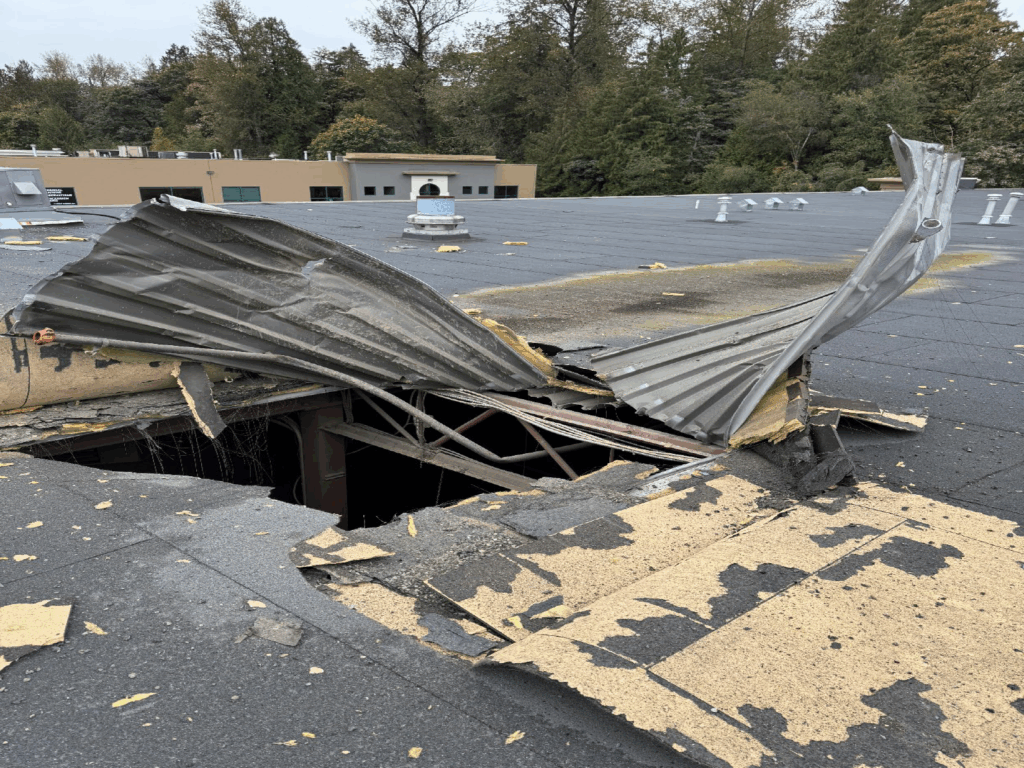
I am sharing this incident as we continue to find air receivers that are 20+ years old and have never once been inspected as a pressure vessel. We even see this in PSM/RMP-covered facilities – the facility does a nice job on their process pressure vessels, but overlooks their air receivers. Air receivers have a history of failures, as they just are rarely recognized as a hazard. As this event makes clear, they present a catastrophic hazard.
An air receiver tank in a sandblasting shop suffered a catastrophic failure during an over-pressure event. The bottom of the tank blew off and crushed the pallet it was sitting on, and the body of the tank was propelled vertically 9 meters (30’) through the roof of the building. The tank collided with and disabled the sprinkler system before ripping a 3-meter square (10’ x 10’) hole in the roof. A large contractor-grade 300 psi airline that was attached to the tank was pulled apart until it ruptured. The damaged sprinkler system activated, flooding the shop space and adjoining businesses, causing the main electrical power to be shut down. The force of the blast blew windows out between the shop space and the adjoining offices.
The primary cause of the vessel failure was that Supply Tank 2 was installed in a high-pressure application, which was neither designed nor constructed. As the system was charging for the first time, the tank could not withstand the pressure and separated at the weld joint joining the bottom head and the shell at the vessel’s base.
